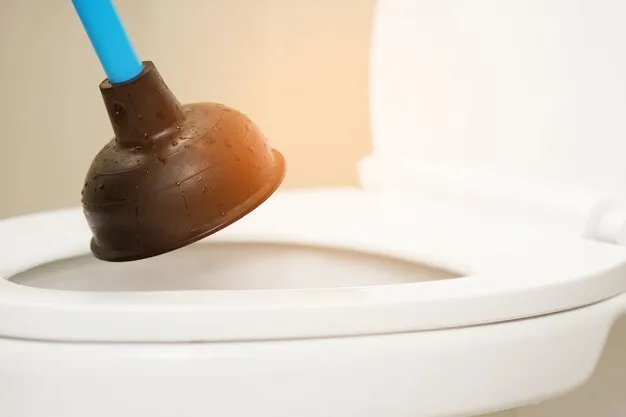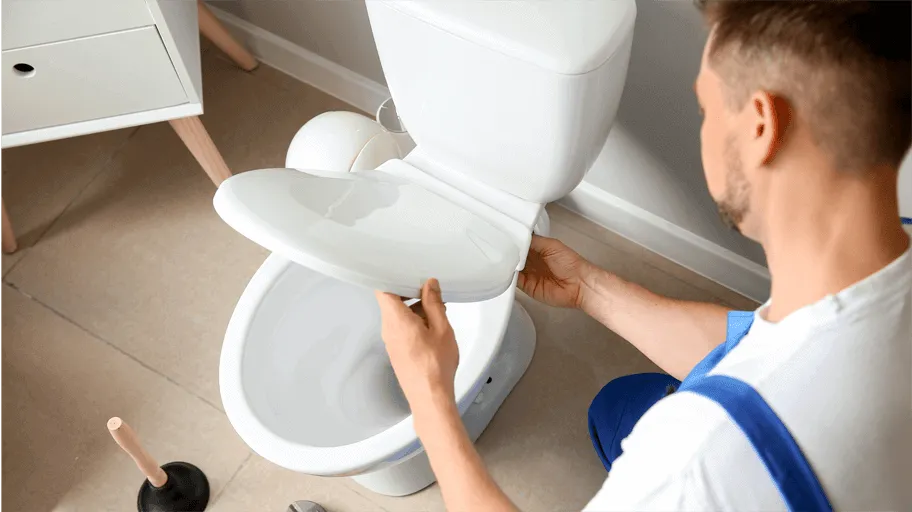A clogged toilet is a common yet frustrating household issue that most people encounter at some point. Whether it’s caused by too much toilet paper, an accidental flush of a foreign object, or slow drainage, learning how to unblock a toilet is an essential skill that will save you time and stress. In this comprehensive guide, we’ll cover various methods and tools to unblock your toilet, from simple DIY fixes to more advanced techniques. Whether you’re dealing with a minor clog or a serious blockage, these steps will help you solve the problem and prevent it from happening again.
Understanding Common Causes of a Blocked Toilet
Before we dive into how to unblock a toilet, it’s essential to understand the most common causes of blockages. By knowing what typically clogs a toilet, you can prevent the issue and choose the right method for unblocking it.
- Excessive Toilet Paper: While toilet paper is designed to dissolve, using too much can cause it to clump together and block the pipes.
- Non-Flushable Items: Wet wipes, paper towels, feminine hygiene products, and other non-flushable items can cause severe blockages since they do not break down like toilet paper.
- Foreign Objects: Small objects, such as children’s toys, toothbrushes, or even hairpins, can accidentally fall into the toilet and cause a blockage.
- Hard Water Deposits: In areas with hard water, mineral deposits can build up in the pipes, narrowing them over time and making them more prone to blockages.
- Clogged Plumbing Vents: Every toilet has a vent that allows air to circulate through the plumbing. If the vent is clogged with debris like leaves or bird nests, it can affect the toilet’s ability to flush properly, leading to blockages.
Read Also: Satru 2 Lirik: An In-Depth Exploration
Gathering Essential Tools for Unblocking a Toilet
Having the right tools is key when learning how to unblock a toilet. Here’s a list of tools and items that can help you efficiently clear a clog:
- Plunger: A standard plunger is your first line of defense for toilet blockages. Make sure to use a plunger designed for toilets, with a flange or extended cup that provides a good seal.
- Toilet Auger: Also called a plumber’s snake, this tool is great for reaching and breaking up clogs deep within the pipes.
- Rubber Gloves: Since this task can get messy, protect yourself with sturdy rubber gloves.
- Dish Soap and Hot Water: A simple household solution that works wonders for soft clogs caused by toilet paper.
- Baking Soda and Vinegar: Another household solution for minor blockages, especially when you want to avoid harsh chemicals.
- Wet/Dry Vacuum: If you have a severe clog, a wet/dry vacuum can be a highly effective tool for clearing the pipes.
Step-by-Step Guide: How to Unblock a Toilet
Now that you understand the common causes of blockages and have the right tools on hand, let’s get into the various methods for how to unblock a toilet. Each method is suited for different types of clogs, so you can choose the one that fits your situation.

Method 1: Unblocking a Toilet with a Plunger
A plunger is often the simplest and most effective tool for unblocking a toilet, especially for minor clogs caused by toilet paper or small amounts of debris.
- Position the Plunger: Place the plunger over the hole at the bottom of the toilet bowl, ensuring it completely covers the hole. If you’re using a flange plunger, ensure the flange fits snugly into the hole to create a strong seal.
- Plunge with Force: Start with a gentle push to avoid splashing, then follow up with more vigorous plunging. Push the plunger down and pull it back up, creating suction that loosens the blockage. Repeat this process about 10-15 times.
- Check the Flush: After several plunges, flush the toilet to see if the blockage has been cleared. If the water drains freely, the clog is gone. If not, continue plunging or move on to another method.
Method 2: Unblocking a Toilet with Dish Soap and Hot Water
If the plunger doesn’t work, another reliable method for how to unblock a toilet is using dish soap and hot water. This method is particularly effective for soft blockages like toilet paper.
- Add Dish Soap: Pour about 1/4 cup of dish soap into the toilet bowl. The soap acts as a lubricant and helps break down greasy or sticky materials that might be causing the clog.
- Pour Hot Water: Boil a kettle of water and let it cool for a minute or two. Carefully pour the hot (but not boiling) water into the toilet bowl from about waist height. The force of the water, combined with the soap, can help dislodge the blockage.
- Wait and Flush: Let the soap and water sit for 10-15 minutes. Then, flush the toilet. If the water drains normally, the blockage has been cleared.
Method 3: Using a Toilet Auger
For more stubborn blockages, a toilet auger (or plumber’s snake) is a highly effective tool. Here’s how to unblock a toilet using an auger:
- Insert the Auger: Gently feed the auger into the toilet bowl and down the drain. Turn the handle to extend the auger further into the pipes.
- Dislodge the Blockage: Once you feel resistance, it means you’ve hit the clog. Twist the handle to break up the blockage or pull it out.
- Flush: After the auger has done its work, flush the toilet to ensure the clog is completely cleared. Repeat if necessary.
Method 4: Using Baking Soda and Vinegar
For a more eco-friendly and chemical-free approach, try the baking soda and vinegar method. This combination creates a fizzing reaction that helps break down blockages.
- Add Baking Soda: Pour one cup of baking soda into the toilet bowl.
- Add Vinegar: Follow with two cups of vinegar. You will immediately notice a fizzing reaction.
- Wait and Flush: Let the mixture sit for 30 minutes to an hour, then flush the toilet. This method is effective for soft clogs caused by toilet paper or mild buildup.
Method 5: Use a Wet/Dry Vacuum
If none of the above methods work and you own a wet/dry vacuum, this can be a highly effective way to unblock a toilet.
- Vacuum the Water: First, set your vacuum to the wet setting and remove the water from the toilet bowl.
- Suck Out the Blockage: Place the vacuum hose into the drain and attempt to suck out the blockage. You may need to cover the toilet’s vent hole (found at the back of the bowl) to increase suction.
- Flush the Toilet: Once you’ve removed the blockage, flush the toilet to ensure water drains properly.
Chemical Drain Cleaners: Should You Use Them?
Some people turn to chemical drain cleaners when searching for how to unblock a toilet. While these products can be effective in breaking down clogs, they come with risks. The chemicals in these products can corrode your pipes over time, and they can be dangerous if they come into contact with skin or eyes. If you choose to use a chemical cleaner, follow the instructions carefully and consider it as a last resort.
When to Call a Plumber
In some cases, your efforts to unblock the toilet may not be enough. If you’ve tried multiple methods and the clog persists, it might be time to call a professional plumber. Here are some signs that indicate you need expert help:
- Multiple Clogs: If other drains in your house are clogged, the problem may be in the main sewer line, which requires professional attention.
- Foul Smell: A strong sewage smell could indicate a blockage deep in the plumbing system.
- Recurring Clogs: If your toilet frequently becomes clogged despite using the proper precautions, it could indicate a deeper issue, such as a broken or misaligned pipe.
Read Also: 2 Angka Jitu Hk Malam Ini
Preventing Future Toilet Clogs
Now that you’ve learned how to unblock a toilet, it’s important to take steps to prevent clogs from happening again. Here are some useful tips to keep your toilet functioning smoothly:
- Flush Only Toilet Paper: Make sure you and your household members only flush toilet paper and human waste. Avoid flushing wet wipes, tissues, or any non-flushable items.
- Use a Reasonable Amount of Toilet Paper: Try not to overuse toilet paper. If you find yourself using a lot, flush halfway through to prevent a buildup.
- Install a Water Softener: If you live in an area with hard water, installing a water softener can help reduce mineral buildup in your pipes, which can lead to blockages.
- Keep the Toilet Lid Down: This will help prevent foreign objects like toys or toothbrushes from falling into the toilet and causing a blockage.

Additional Tips for Unblocking a Toilet
- Avoid Using Drano or Harsh Chemicals: While it might seem like a quick fix, using harsh chemical cleaners like Drano can damage your pipes over time. Stick to natural methods or mechanical tools.
- Use a Toilet Brush as a Makeshift Plunger: If you don’t have a plunger on hand, a toilet brush can serve as a temporary tool. Insert the brush into the toilet hole and push it in and out vigorously to create some suction.
- Prevent Clogs with Regular Maintenance: Consider using an enzyme cleaner regularly to keep your pipes clear. These cleaners help break down organic waste and keep things flowing smoothly.
Conclusion
Unblocking a toilet can be a frustrating experience, but with the right tools and techniques, it’s usually a task you can handle yourself. Whether you use a plunger, an auger, or a simple dish soap solution, knowing how to unblock a toilet will save you from calling a plumber unnecessarily. By understanding the causes of toilet clogs and taking steps to prevent them, you can keep your bathroom plumbing in top condition. If you encounter a serious blockage that you can’t fix on your own, don’t hesitate to contact a professional plumber to avoid further damage to your plumbing system.



